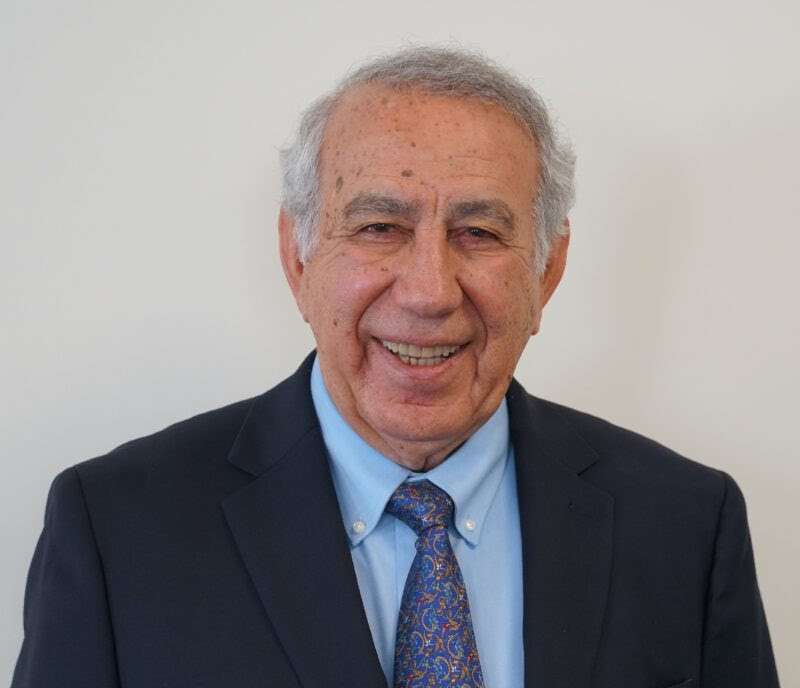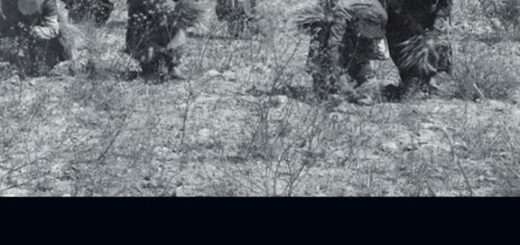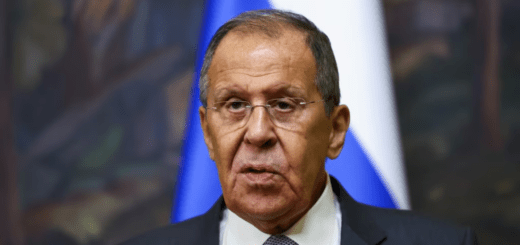Watertown Native Harry Parsekian’s Adventures Span the Globe

Mirror-Spectator
WATERTOWN — “My country is the world, my countrymen are all mankind.” This motto, based on the words of American abolitionist William Lloyd Garrison in 1838, is how Watertown native Harry Parsekian describes his philosophy in life.

Harry is young at heart and perhaps thanks to his various athletic endeavors over the years, he also appears much younger than his chronological age. He was born at his parent’s home on Hazel Street in Watertown in 1935 and grew up in an Armenian family and community environment. At home, the Parsekians spoke Armenian primarily, though when older Armenians got together Turkish would be mixed in. They knew everybody on the street by name, whether they were Armenian, Italian, Greek, or Irish, due to the closeknit nature of the Watertown community.
Harry’s mother Myreni (Mary) was born in Efkere (today Bahceli), a village northeast of Gesarea or Caesarea (Kayseri), while his father Sarkis was born in Nirze, another village in the same region. Sarkis and his brother came to the US prior to the Armenian Genocide and started a cement block manufacturing business in Watertown. Harry as a youth hated going there so much, but his clever father would take Harry’s dog early in the morning with him, knowing that Harry would then come along and work. Mixing the sand and creating cement blocks, Harry recalled, was some of the hardest work he ever did.

Years later, Harry was able to get the intersection of Dexter Avenue and Nicholas Avenue in East Watertown named Missak and Sarkis Parsekian Square after his uncle and father, as this area became considered “Little Armenia” due to the number of Armenian stores. Missak and Sarkis were the ones who built two blocks of these Armenian stores.
Harry recalled how the Nirze Armenians continued many of their traditions after they settled in Watertown. For example, in early or mid-May in Nirze, the Armenians would go to a nearby fountain called Gat Aghpiur or Milk Fountain, which they believed held mystical powers of increasing fertility. Consequently they would rub the water on cow’s udders or women to increase lactation and fertility. This feast day continued to be celebrated at the corner of Dexter and Nichols Avenue at the Harachtimagan (Armenian Progressive League of America) club. Most Nirze Armenian events were held there because of its central location since most people did not have cars in those days.
Harry graduated from Watertown High School and then had a short business venture into the world of gas stations. In 1953, Harry and his brother operated an Amoco station on Mt. Auburn Street. After realizing this was not a business for them, he and his friend from school, George Lembo, decided to enlist in the army. The draft was mandatory and three years long at that time, but by enlisting voluntarily it would be reduced to two years. After Harry’s tank training at Fort Knox, Ky., an officer asked, “Anybody here know how to type?”, which prompted Harry to immediately raise his hand. Actually, he had limited experience typing, but he ended up anyway in the supply room, under the supervision of Sergeant Bailey, while simultaneously taking psychology courses.

After the army, when a local Armenian band needed a dumbeg player in 1956, which Harry conveniently played, he ended up joining the Armen Orchestra alongside Carl Zeytoonian, Armand Janjigian, Jimmy Garabedian, Eli Nazarian and Gary Alexander. They traveled, playing Armenian folk music upon varying stages from Syracuse to Times Square in New York City (for New Year’s Eve). It was due to this band that Harry ended up a part of the youth group of the Harachtimagan’s, the Armenian Youth of America (AYA), and met his first wife, Berjig Javian. She and her sister were part of the AYA dance group which often rehearsed in the Javian basement and her father Martin or Mardiros Javian was prominent in the Armenian Progressive League. (Harry has been happily married to his second wife, Hripsime Kassabian, since 1973.)
Harry said that he was awed by the AYA and the Progressives because he was previously only exposed to the local Boston area, and when they had conventions, people came from all over the US and Canada. He recalled that they had such “wide-ranging thoughts” about Armenians and remembered thinking, “Oh my God! These are dedicated Armenians!”
Harry then moved to Fall River and went to textile school but the plant he was working in was sold. He then returned to Watertown and went to night school at Northeastern University. While working at a textile factory in Newton by day and studying at night, Harry realized that his true passion was real estate. When he learned of an opening at a real estate office in Brookline, Harry jumped at the chance to work there.
Soon, Harry’s brother-in-law found a fully furnished apartment in South Boston that was being sold, which helped Harry start his career. After putting $1,000 down, with a second mortgage, he began renting out the apartment to anybody who came his way, which taught him a lot about the difficulties people go through in life.
Snowballing the profit from his first investment, Harry accumulated multiple properties in South Boston because, he said, “at that time, they were giving them away. You can’t even buy them now.” Properties were run down and sold cheaply, so they could be fixed and then rented out. After a while, he said, “I could tell who would be a good tenant” just from a single meeting. He bought buildings in Cambridge and later in Provincetown. Most of his property was in South Boston, but he has already sold just about everything, with one more deal on the way.
Athletics
Besides his finances, Harry also kept in touch with his athletic side. He wanted to run a marathon because “it was a tough thing to do, and something to be proud of.” In 1983, Harry joined a group of runners who would practice at L Street in South Boston, and ended up running 20 consecutive Boston Marathons, all the way up to 2002. The group was called the “noontime nuts” because summer, fall, winter and spring, they would run at noon no matter what the weather was outside, even if there was a snowstorm or pouring rain. Later he had a plaque put on a bench. He said that the bottom line is “‘These were the best years of our lives.’ We had so much fun, so much camaraderie.”
Harry connected with the earth by camping, his favorite area being Provincetown, as well as driving across North America (including Mexico and Canada) with his family in a tent trailer in 1976.
He kept traveling, and in 1984, took a trip around the world with a small group of people, which included visits to Russia, Siberia, Mongolia and China.

After some recreational hiking in New Hampshire, Harry decided he wanted to climb Mount Ararat, again because “it’s a challenge and something to be proud of.” After an attempt in 1985 was foiled at the last minute due to fighting between Kurds and the Turkish military, he returned the next year. In August 1986, accompanied by a French group, Harry reached what he called the “bosom of the Armenian people.” Though other climbers began descending after reaching the summit, Harry lingered, as he felt very connected there to his roots there, to the point where he started singing Armenian liturgical songs at the top of his lungs to the heavens above.

In 1989, Harry rafted the Grand Canyon, while in 2006, he completed a bike tour from Armenia to Artsakh. In 2007, when he was 71, Harry biked across America with a group of 39 cyclists from California to Boston “for adventure,” he said, and to raise money for the Boys and Girls Club. This 3,415-mile trip was done over 45 days and helped raise thousands of dollars.

Armenian and American Activism
Harry participated in various protests such as against the Vietnam War and activist groups such as the Committee for a Sane Nuclear Policy (SANE). Harry was involved with a concert bringing Pete Seeger, the noted folk singer, as well as the famous comedian Steve Allen, among others, to Boston to help protest against nuclear weapons.

Native Americans went through the same types of oppression and colonization that the Armenians did. Harry said he strongly emphasizes with the former, particularly as the atrocities committed against them are not taught in school nor generally recognized. Harry contributed to their associations and attended some powwows and other Native American events. He also was able to bring together Chief John Peters, executive director of the Massachusetts Commission of Indian Affairs, with State Sen. William N. Brownsberger at the Massachusetts State House. “That’s my job,” Harry said, “to put good people together with good people.”
Not unexpectedly, his activism extended to the Armenians. During his first trip to Soviet Armenia and Soviet Russia with his mother, in 1968, Harry was surprised to see much of the propaganda he had heard was false. After a long flight to Moscow, Harry went to the bathroom and was disappointed to see that the toilets were in terrible shape, with plumbing systems overall dissatisfactory. This situation was prevalent throughout Armenia.
It led Harry to get pictures, books, and brochures on plumbing in America, and bring them to Armenia, to try to improve toilets there. Unfortunately, in order for change to occur in Armenia, the orders had to come straight from Moscow, and his efforts were in vain. “I was very disappointed, very disappointed,” he stressed.

Harry later became involved with the Cambridge Yerevan Sister City Association, as well as the UAF (United Armenian Fund). He took Eduard Avagyan, the mayor of Yerevan from 1985 to 1989, Yerevan State University Rector Sergey Hambardzumyan, and other Soviet Armenian dignitaries around when they first visited Cambridge in an official Yerevan delegation to sign the sister city protocols. After the devastating 1988 Armenian earthquake, Harry himself took over half a dozen UAF flights to Armenia to distribute aid, usually only staying five or six hours on the ground in Yerevan. He said he loved the flights, which were great adventures, and related another one of the mottos he lives by – “Life is an adventure. Fear and worry only spoil it.”

He also continued his interest in his immediate heritage and ancestral villages. During Harry’s first attempt in 1985 to climb Mount Ararat, which was foiled due to fighting between the Turkish military and Kurds, he and his fellow climbers had to become acclimated to higher altitudes by first climbing smaller mountains in the Taurus mountain chain to the south. During this time, Harry asked the tour guide to take him to Nirze which was on the way. At Nirze, Harry found only Turks and Kurds left, and no Armenians. Initially, he said, he “didn’t feel a thing.” As he matured over the years, he appreciated the fact that “I was able to walk on the same cobblestones that my mother and father walked on.”

Harry later on went there again and edited a book about the village, Armenians of Nirze, Turkey: Roots of an Armenian-American (Watertown: Nirze Educational Society, 2015) in order to have people remember that there were Armenians who lived in that place and through education to help prevent the denial of the Armenian Genocide.
In 2016, Harry was one of the initiators of a group that became called Armenian Friends of Mount Auburn Cemetery. The group raised money and erected a monument in 2022 for Simon Antranighian, the first known Armenian to have been buried in the cemetery in 1855 in an unmarked grave. Harry also has work to call attention to merchant Joseph Iasigi (1800-1877), the first Ottoman consul in Boston, who was an Armenian from Smyrna also buried in this cemetery.

Harry also founded the Friends of Hrant Dink organization in 2009, after the assassination of the Armenian-Turkish newspaper editor Hrant Dink, in 2007 in Istanbul. Harry was honored to meet Dink in Turkey in 2006, only months prior to his murder. Harry said he “visualized him as the Martin Luther King of today,” a man who died for the sake of human rights. Harry said that he had a lot of respect for Harvard University and thought that Dink’s legacy could be perpetuated there due to its prestigious stature, so he and several colleagues including Dr. Taner Akçam and Gonca Sönmez-Poole met with Harvard officials to make the connection.

Starting in 2014, the organization funded and organized a Hrant Dink Memorial Lecture at Harvard, as well as occasional panel discussions on timely topics. Harry said, “I was hoping that the Armenian cause could find a berth at Harvard.”

Harry toured the eastern provinces of Turkey six times over a number of years in groups led by Armen Aroyan of California. He said he feels honored to have made many Turkish friends there and in the United States, who are mostly journalists and academics, in part through attending lectures at Harvard University.
Ever active, he hopes to go to Istanbul again to be present on September 15 for the commemoration of Dink’s birthday.







